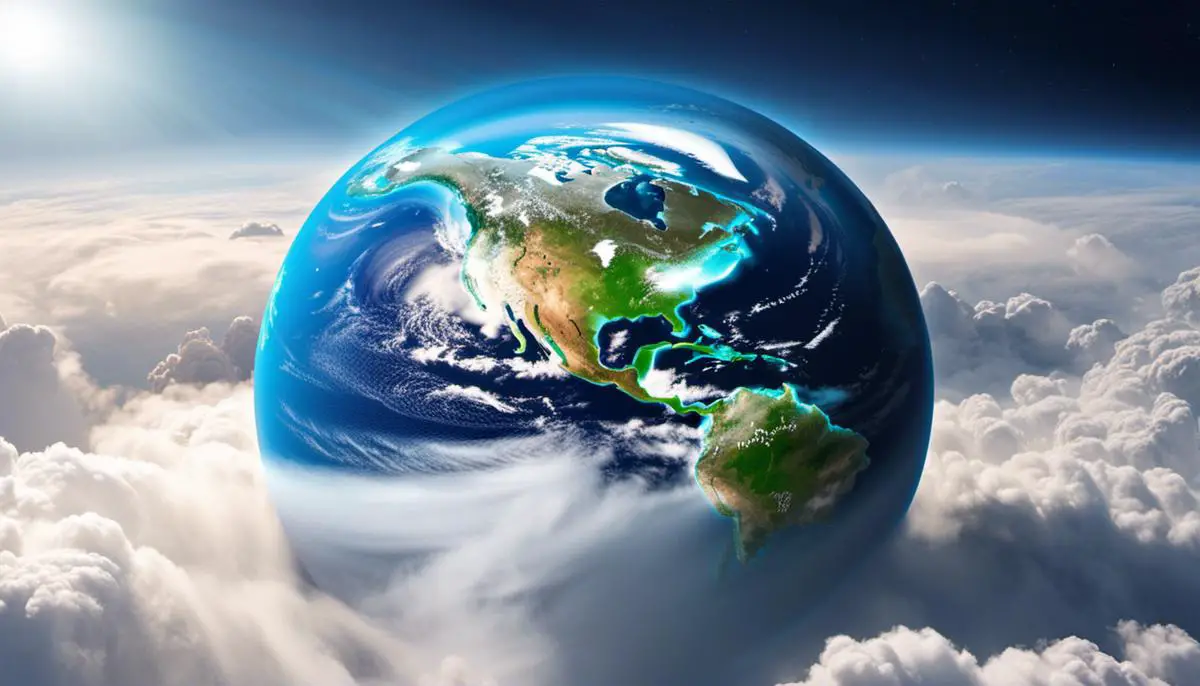Our planet’s life-supporting structure is enveloped within a delicate shell; the ozone layer, which plays a crucial role in protecting life on Earth. It’s a rarefied region of the stratosphere, filtering out the sun’s damaging ultraviolet rays, thereby preserving the equilibrium of ecosystems and the health of all living organisms. However, its depletion and the subsequent creation of a hole presents a significant global concern. As of 2022, the hole in the ozone layer continues to manifest its fluctuating dynamics, influenced by atmospheric chemistry and climatic conditions. This discussion spotlights the state of the ozone layer hole, its environmental and health impacts, along with global countermeasures and the future implications tied to its preservation.
Understanding the Ozone Layer
Understanding the Ozone Layer
The ozone layer is an integral part of Earth’s stratosphere, which rests approximately 6 to 10 kilometers (or roughly 3.7 to 6.2 miles) above our planet’s surface. Comprised of a concentrated form of ozone (O3) molecules, this layer extends up to around 50 kilometers (or about 31 miles) above the Earth’s surface.
Ozone is a specific form of oxygen molecule consisting of three oxygen atoms. This is contrary to the more commonly recognized version of oxygen which has just two atoms. The ‘extra’ atom in an ozone molecule gives it the capacity to absorb the majority of the sun’s harmful ultraviolet B radiation and a portion of its ultraviolet C radiation. This unique property is why the ozone layer is instrumental in life’s survival on Earth.
Sunlight induces the formation of the ozone, but the concentration of ozone molecules within the layer varies. This variance is dependent on factors such as season, latitude, and altitude. Nonetheless, even in its most dense state, the ozone layer is relatively thin and fragile, reinforcing the need to safeguard and nurture it.
Role and Importance of the Ozone Layer
The primary function of the ozone layer is to absorb and block the majority of the Sun’s harmful ultraviolet radiations. Without this layer, those intense rays could reach the Earth’s surface, resulting in harmful consequences to all life forms. Among those impacts, humans could experience increased rates of skin cancer and cataracts. Impacts on ecosystems could include harm to phytoplankton – critical organisms vital to the planet’s carbon and oxygen cycles – and reduced crop yields.
Hole in the Ozone Layer: Update 2022
The ‘hole’ in the ozone layer refers to areas where ozone concentrations have been substantially depleted. The most extensive and renowned of these ‘holes’ is above Antarctica, which has been a point of concern since the discovery of its existence in the mid-1980s.
Owing to global efforts such as the 1987 Montreal Protocol, which sought to reduce the manufacture of ozone-depleting substances (ODS), improvements to the ozone layer’s health have been noted. By 2018, the Science journal reported an annual reduction in the size of the Antarctic ozone hole by roughly 1.5% per decade since 2000.
In 2022, further advancements have been noted globally, including the continued reduction of the ‘hole’ over Antarctica. However, it should be noted that the overall process of ozone layer restoration is slow-moving and requires continued international commitment to lessening ODS and combating climate change. The full recovery of the ozone layer is still anticipated to extend well into the future, likely not until around 2060-2075.
Despite this progress, there remain areas where ozone layer depletion is more substantial, requiring further investigation and action. Specifically, a 2018 study published in the journal Atmospheric Chemistry and Physics noted an unexpected and consistent decline in ozone layer concentration at lower latitudes, where the sun’s radiation is the strongest, potentially affecting highly populated areas.
Looking at the Bigger Picture
Efforts towards the preservation and recovery of our planet’s ozone layer have shown promising results, but there is still much work to be done. The health of the Earth’s ozone layer is not only crucial for environmental stability but also for the survival and thriving of all life forms. Progress made so far underscores the effectiveness of international collaboration, but our continued dedication and vigilance are crucial.
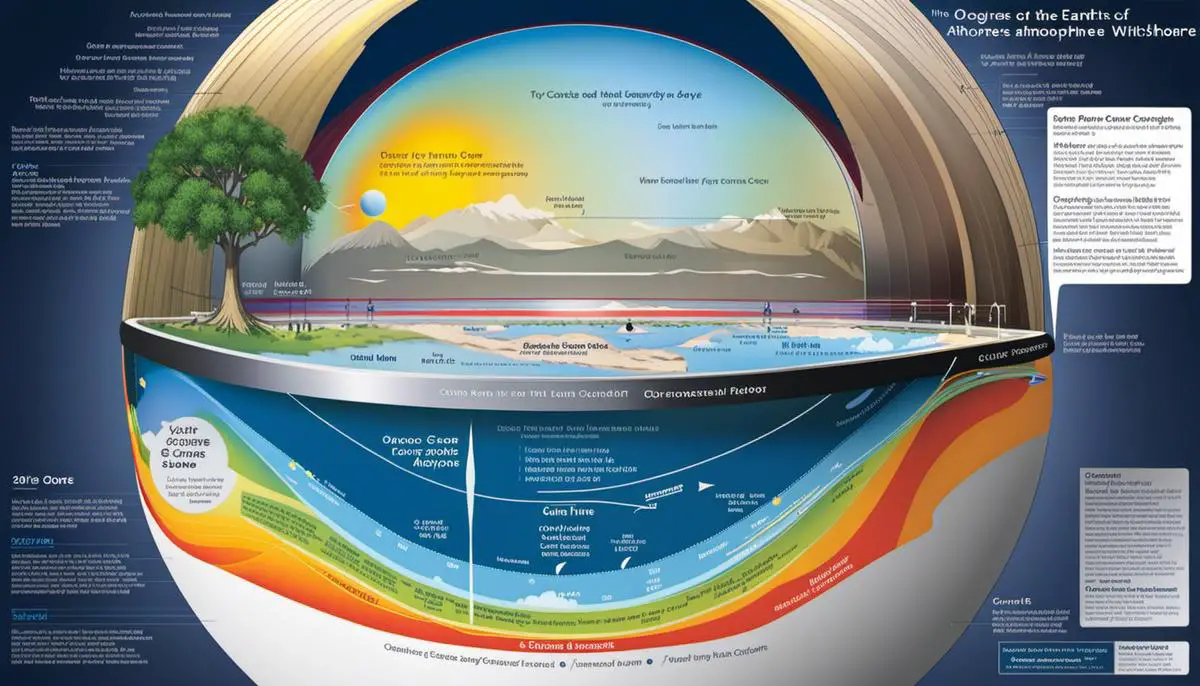
Current State of the Ozone Layer Hole
The Present Status of the Ozone Layer Depletion: A Brief Summary
The ozone layer, a protective sheet in the Earth’s stratosphere, plays a critical role by absorbing a significant amount of the Sun’s detrimental ultraviolet (UV) rays. Yet, over the years, human activities have lead to the weakening of this crucial layer, forming the “ozone hole”. In recent times, the impacts of ozone layer depletion have rightfully attracted considerable attention and research.
The Scientific Assessment of Ozone Depletion 2022, prepared by World Meteorological Organization (WMO) and United Nations Environment Programme (UNEP), indicates a progressive healing of the ozone layer and shrinking of the ozone hole. This positive trend has largely been attributed to reduced emissions of ozone-depleting substances, a success of international treaties like the Montreal Protocol.
Latest Data on the Ozone Layer Hole
In 2022, the ozone hole over Antarctica was considerably smaller than it was a few decades ago. Observations from NASA’s Ozone Watch indicated that the maximum size of the ozone hole in 2022 was around 16.4 million square kilometers, nearly three times the size of the United States. But this is significantly lower than the largest-ever recorded size, which was 26.6 million square kilometers in 2006.
According to the National Oceanic and Atmospheric Administration (NOAA), the concentration of ozone-depleting substances in the atmosphere continues to decrease. Stratospheric ozone has increased globally outside of the Polar Regions since 2000, indicating a gradual healing process.
Ongoing Studies and Research on the Ozone Layer Hole
Several studies are ongoing to monitor the current state of the ozone layer hole and predict future changes. The Copernicus Atmosphere Monitoring Service (CAMS), run by the European Centre for Medium-Range Weather Forecasts (ECMWF), is one of many organizations meticulously tracking the size and depth of the ozone hole.
Researchers are also studying the interaction between ozone depletion and climate change. According to a study published in Nature, the ban on ozone-depleting substances under the Montreal Protocol not only helped repair the ozone hole but also significantly reduced the effects of climate change, further highlighting the importance of maintaining this global agreement.
Visual Representation of the Current Ozone Hole
Visual data can be found on NASA’s Ozone Watch website, which provides real-time monitoring of the ozone layer hole over the South Pole. Satellite imagery from NOAA also visually represents the present condition of the ozone layer.
The Current Status of the Ozone Layer
The condition of the ozone layer hole, as we look at it in 2022, does show significant progress towards improvement. Nevertheless, it’s critical to maintain our vigilance in minimizing emissions of substances that deplete the ozone and take active steps to alleviate climate change impacts. Continued research and regular monitoring will allow us to observe any future alterations and provide necessary safeguards for this essential protective shield of Earth.
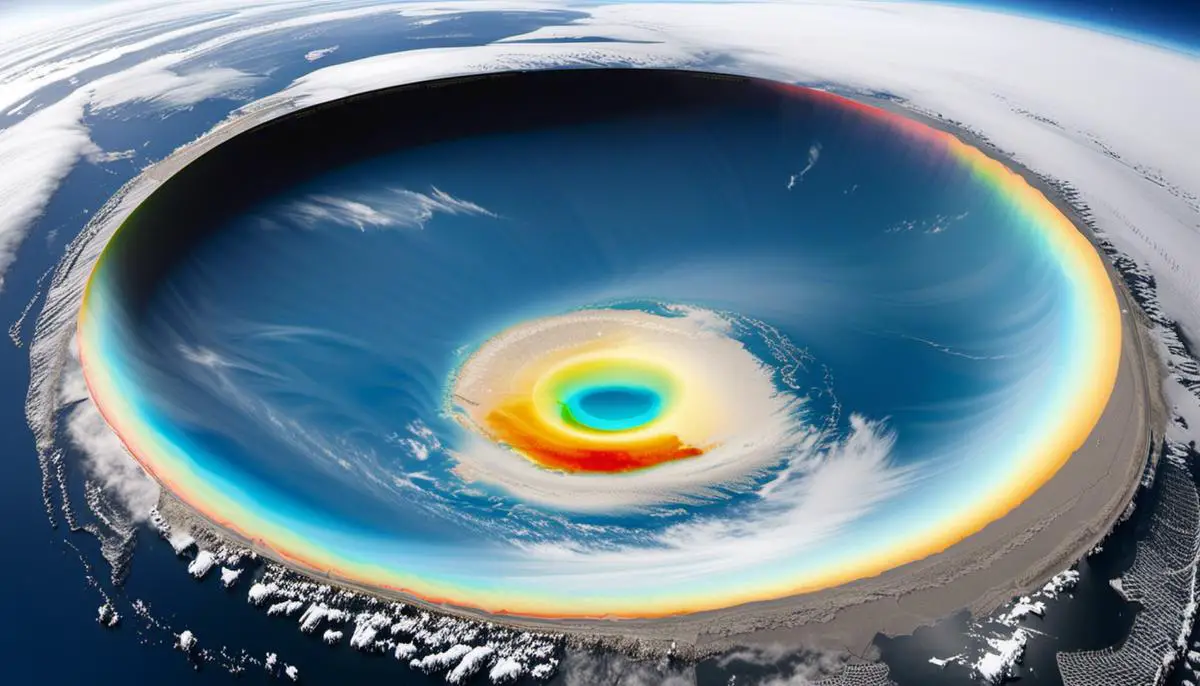
Impacts of the Ozone Layer Hole
Human Health Implications: Rising Threat of Skin Cancers
As the hole in the ozone layer continues to widen in the current year, the major cause for alarm is the likely escalation in the occurrence of skin cancer consequent to increased exposure to solar ultraviolet (UV) radiation. For long, scientists have cautioned us that significant thinning of the ozone layer could result in an amplified rate of UV-related skin cancers and cataracts. The cause is UV-B radiation which reaches the Earth’s surface in higher quantities as the ozone layer thins. UV-B radiation is damaging and leads to skin cancer and cataracts in humans, negatively affecting the health and livelihood of billions worldwide.
Endangerment of Marine Life: Increased UV Penetration in Oceans
Another pressing issue associated with the ozone layer hole is the increased levels of UV radiation penetrating the world’s oceans. Phytoplankton, microscopic organisms that live near the water surface, are particularly vulnerable. As primary producers in the oceanic food chain, phytoplankton serves as the foundational diet for a variety of marine organisms. Consequently, increased UV-B radiation can disrupt the delicate balance of marine ecosystems and negatively affect the survival of various marine species, leading to drastic impacts on biodiversity and fishing industries.
Effects On Climate Systems: Unpredictable Weather Patterns
The hole in the ozone layer also has a significant impact on global climate systems. Changes in ozone concentration can alter the temperature structure of the Earth’s atmosphere. The ozone layer absorbs solar radiation, which heats the surrounding air, creating a stable atmospheric layer that affects weather and climate patterns. With ozone depletion, this equilibrium is disrupted, potentially leading to more unpredictable and severe weather, exacerbating the current challenges posed by climate change.
Protection Measures: Reducing Ozone-depleting Substances
Given these impacts, the concerted international effort to protect the ozone layer is even more crucial in 2022. Key to this has been the Montreal Protocol on Substances that Deplete the Ozone Layer, an international treaty designed to phase out the production of numerous substances responsible for ozone depletion. Continued enforcement of such measures, along with widespread public awareness and global cooperation, is crucial to mitigate the problems caused by the deterioration of the ozone layer.
Understanding Recent Developments in Ozone Layer Recovery
Encouraging advancements have been made in combatting the issue of ozone layer depletion. Research indicates that the ozone layer is slowly but surely recuperating due to significant reductions in the emission of ozone-depleting substances. Nonetheless, complete recovery remains a lengthy and intricate process that needs global participation and sustained commitment. The proactive maintenance of the ozone layer’s well-being is undeniably crucial for not only preserving the equilibrium of nature but also for safeguarding human health and alleviating progressive climate change.

Efforts to Heal the Ozone Layer Hole
The Montreal Protocol: A Collective Global Response to Ozone Layer Depletion
Back in 1987, global leaders came together in response to compelling scientific evidence highlighting the detrimental effects of substances like chlorofluorocarbons (CFCs) and Halons on the ozone layer. This inspired the creation of the Montreal Protocol, an international commitment to gradually eliminate the production and consumption of such ozone-damaging substances (ODS). As we move into 2022, this agreement has proven successful with approximately 99% of nearly 100 identified substances effectively phased out. The Montreal Protocol stands as a significant milestone in rejuvenating the ozone layer and serves as a testament to the profound impact that concerted global action can have on tackling environmental challenges.
National Commitments in 2022: Protecting the Ozone Layer
Different countries have tailored their approach, taking measures to further align with the stipulations of the Montreal Protocol. The United States, for instance, regulates the consumption and production of ODS under the Clean Air Act and its Amendments. Its program, termed “The Significant New Alternatives Policy (SNAP),” promotes the transition to safer alternatives. European countries have also taken robust measures reflected in legislation like the “EU Ozone Regulation,” which imposes tighter controls than the Montreal Protocol to fast-track the ozone layer’s recovery.
Local Interventions: Individual Actions Matter
Local interventions also play an essential role in preserving the ozone layer. Many municipalities are implementing programs to ensure the safe disposal of household items containing ODS, such as air conditioning units and refrigerators. On an individual level, people can contribute by properly maintaining these appliances, decreasing the need for additional Freon, a commonly used CFC. More locally, these efforts also involve educating the public about the importance of the ozone layer and the steps they can take to protect it.
Emerging Technologies for Ozone Layer Recovery
In addition to policy measures, it’s worth noting the emergence of new technologies that hold promise for the ozone layer’s recovery. Since commonly used coolants are a major source of ODS, technological advancements are crucial. Air conditioner manufacturers, for instance, are now utilizing hydrofluorocarbon (HFC) alternatives with lower global warming potentials. Additionally, research in the field of geo-engineering reinforces potential technologies like releasing weather balloons with tiny particles that reflect sunlight, playing a role in cooling the planet and indirectly assisting in the ozone layer’s recovery process.
Current State of the Ozone Layer Hole in 2022
In recent years, there have been encouraging signs that global efforts are having a positive effect. The United Nations Environment Programme (UNEP) and the World Meteorological Organization (WMO) reported that the ozone layer is on the path to recovery, with the large hole over Antarctica likely to heal completely by the late 2060s. The regular fluctuations in size and depth of the ozone hole, such as the unusually large Antarctic ozone hole in 2021, are expected and indicate that the process of recovery will not be linear.
In 2022, the condition of the ozone layer serves as a testament to the successful measures undertaken by global partnerships, implementation of national commitments, local initiatives, and advancements in technology to tackle pressing environmental matters. The collective efforts and driving force against various obstacles echo an optimistic prognosis for the future wellbeing of the ozone layer.
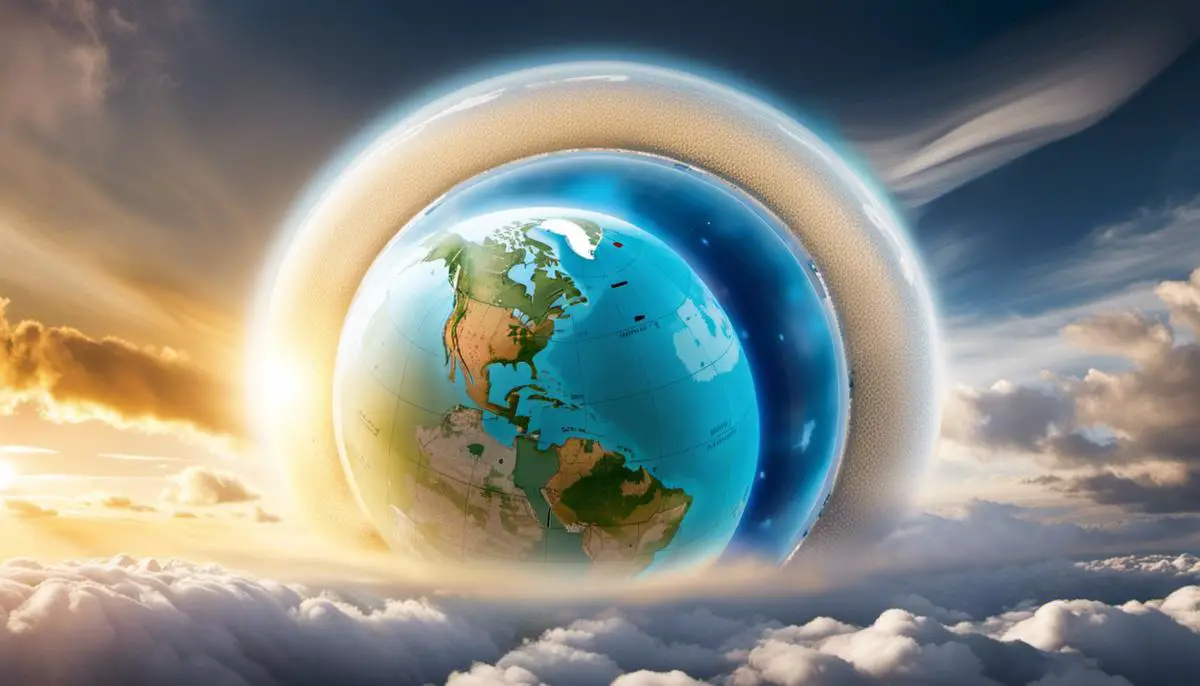
What the Future Holds
Projected Developments for the Ozone Layer Hole
Emerging studies in 2022 present hopeful indications of the ozone layer on the road to recovery, which bodes well for our planet’s future. The Montreal Protocol, a significant international agreement put into effect in 1987 to gradually eliminate the use and production of substances harming the ozone layer, seems to be showing positive outcomes. Based on existing trends, it is anticipated that the ozone layer hole over Antarctica could reach total recovery by mid-21st century.
The Role of Climate Change in Ozone Layer Recovery
Climate change, specifically global warming, adds a certain level of complexity to the healing of the ozone layer. Although the phasing out of chlorofluorocarbons (CFCs) contributes to healing the ozone layer, increasing temperatures in the lower atmosphere (troposphere) can lead to ozone creation, while higher temperatures in the upper atmosphere (stratosphere) can lead to ozone destruction. Therefore, the combined effects of these processes could impact the trajectory of the ozone layer’s recovery.
As another factor, short-lived climate pollutants like black carbon, methane, and hydrofluorocarbons (HFCs) can also affect the ozone layer. These molecules can trigger chemical reactions that contribute to ozone depletion. They are currently not fully controlled by international regulations, which is a concern for future ozone layer recovery.
Scientists’ Expectations for the Future
Overall, scientists are cautiously optimistic about the future of the ozone layer. Advanced observation technologies are allowing more accurate monitoring of atmospheric conditions, and the continued enforcement of international agreements is essential for ozone layer recovery.
However, scientists warn that vigilance is key. While existing efforts have made a significant difference, a sustained commitment to preventing ozone depletion is required to ensure that the ozone layer can continue to recover. They emphasize the need for maintaining and strengthening regulations against ozone-depleting substances and consistently monitoring the state of the ozone layer.
In conclusion
The future of the ozone layer depends on the continued global commitment to reducing ozone-depleting substances and mitigating climate change. The trends are encouraging, but the full recovery of the ozone layer is a long-term process and requires consistent effort and international cooperation.
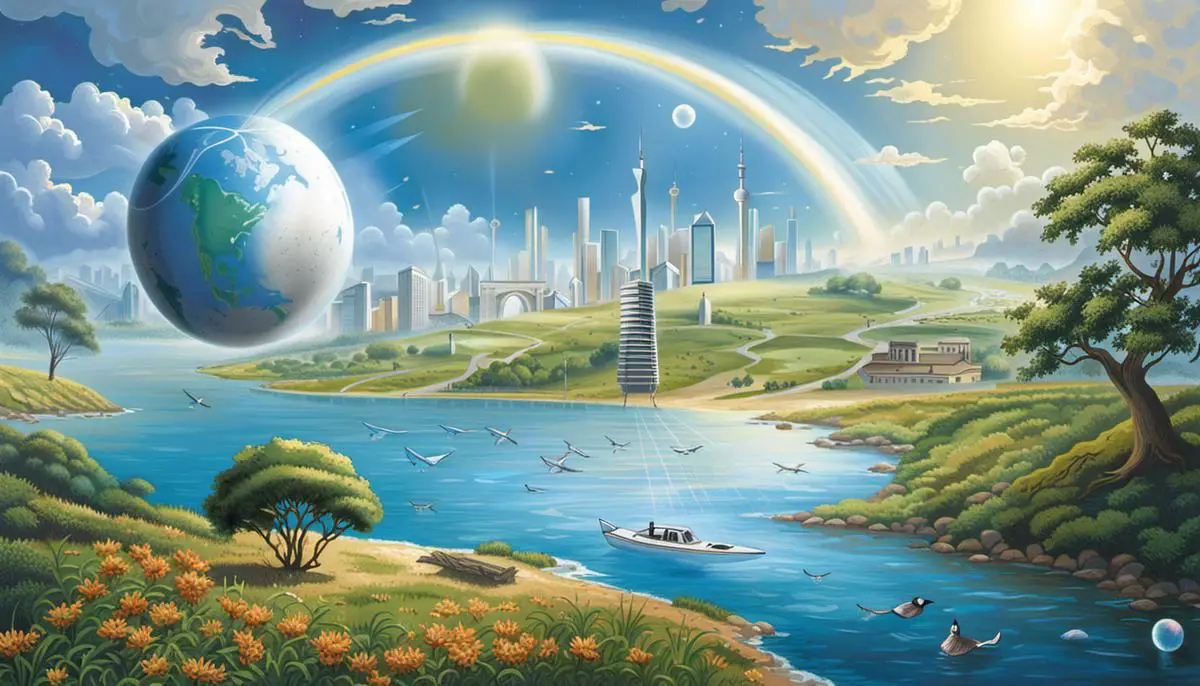
The future of the ozone layer hangs in the delicate balance of our actions today. Predictions and forecasts reveal a possibility of full recovery, albeit far in the future. The contemplation of whether this essential protective layer can be completely mended rests on the strength and commitment of global, national, and local efforts. The expedited phasing out of harmful substances, innovative technologies, and sustainable practices are all paramount factors that determine the trajectory of ozone layer recovery. As we navigate through the 21st century, understanding and advocating for the conservation of the ozone layer transcends scientific necessity—it becomes a moral responsibility for securing the health of our planet for future generations.
![]()
